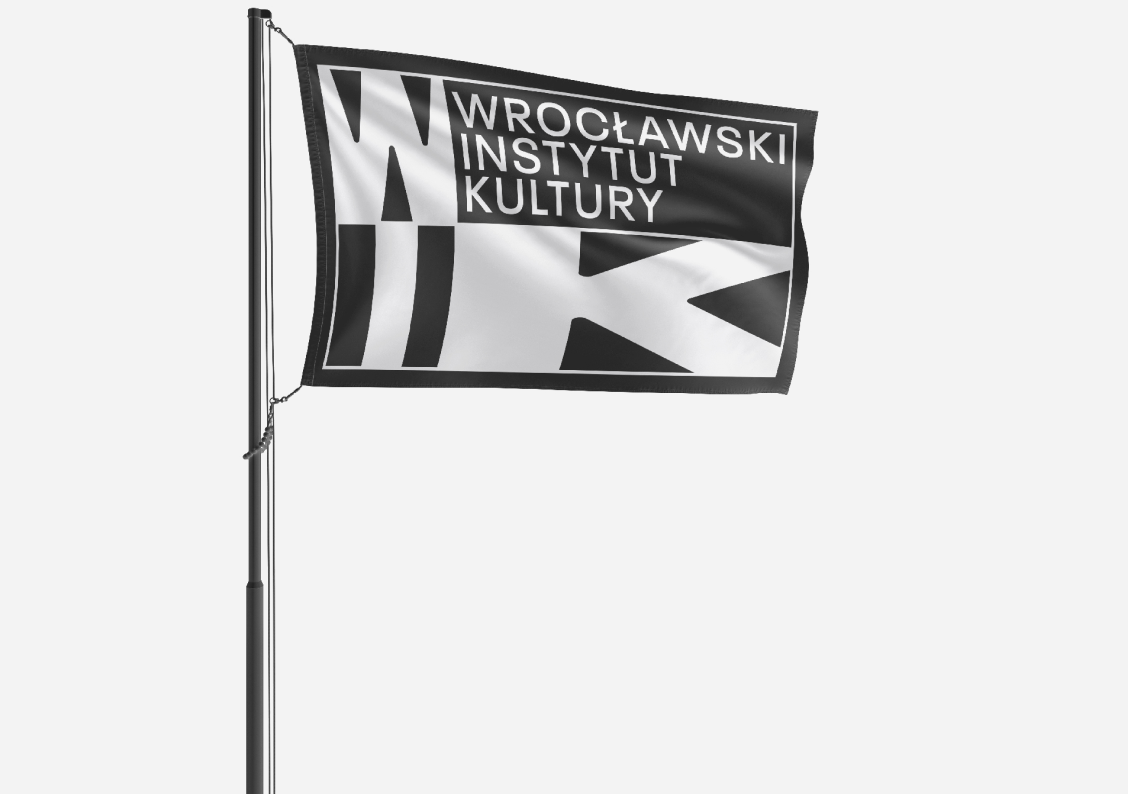Viktoriia Tofan
Visual artist, graduate of the Academy of Fine Arts in Kiev and the Faculty of Painting at the Eugeniusz Geppert Academy of Fine Arts in Wroclaw. She presented her diploma work as part of her solo exhibition ZWYKŁE NIEZWYKŁE (BWA Studio, Wroclaw) and as part of group exhibitions such as Mikstury Kultury (National Forum of Music, Wroclaw), 11th TRIENNALE OF SMALL PAINTING FORMS, (Wozownia Art Gallery, Torun), Love Letters (Almanac Projects, London), Naked Nerve. Studio Mistress: Rajkowska (BWA, Wroclaw) and during the 19th SURVIVAL Art Review in Wroclaw. She lives and works in Wroclaw.
Viktoriia Tofan is engaged in a search for a language that would address the profound sense of alienation she shares with deaf people, who often do not speak or have articulation problems. His work with this group has become the basis for creating both a new alphabet and a new language. These new languages are the new territories of her private homeland, her new belonging and spatiality. Language, in this view, becomes not so much a vehicle for information, but a place, an emotional formation, and a community in frailty/otherness. This private homeland is the starting point for communicating and including in the community the stories of people who have been placed outside the social bracket. Tofan uses embroidery as a way of working with language using both the sensuality of the craft attributed to women and the graphicity of the reverse, which in this case begins to function as the obverse.
“Whose voices are being heard?”
Wrocław-based Viktoriia Tofan took part in the Norwegian part of the project. Her works created during the residency could not be shown during the Hvisten Salong festival, which was the finale of the residencies of artists from Poland, because they were not ready at the time. Therefore, they became part of our exhibition. They are located to the left from the entrance. Of her time in Hvitsten, Norway, Viktoriia says that she found it difficult to trace the identity of the place and its inhabitants. With its stunning setting and architecture, the town feels like a beautiful film location, perfectly covering up any hints of the past. For this reason, the artist decided to keep the diary/sketchbook that is presented in the exhibition.
It helped her understand the surrounding landscape, the town itself and the feelings it evoked. While gathering information about Hvitsten, the etymology of the town’s name proved to be an important clue for Viktoriia. It translates as ‘white’ and ‘stone’. It also turned out that the hill where the town is located, as well as the mountains surrounding it, were formed as a result of a volcano. Its crater was located on an island nearby, and all the aforementioned formations are among the oldest in all of Oslofjorden. This
notion inspired the artist to observe the stones, collect and sketch them. In her activities, she treated them as links to the past, reaching very far back in time. She started recreating and creating the ‘History of the White Stone’. She began splitting the stones and combining them with lead. This gesture can be perceived as an attempt to question the pristine nature of Hvitsten, cultivated by its residents. Biographies of famous painters such as Edvard Munch and Theodor Kittelsen, who found peace and inspiration in the seaside town, were of great help to her. Another important theme that emerged for the artist during her stay in Norway turned out to be the rock drawings at Alta. The petroglyphs depict figures, everyday objects and geometric figures carved or sculpted on the rock base. It is very possible that Alta was a meeting place for people coming from coastal areas and interior lands. There they exchanged goods, participated in rituals, ceremonies. It became the starting point for creation of a patchwork textile made of multiple elements. To produce it, the artist used her own linocuts, which she printed on it. Those are individual marks that form a whole narrative. The textile is, therefore, embedding both recording and storytelling. This is yet another attempt in Viktoria’s artistic practice to create a visual and universal language.

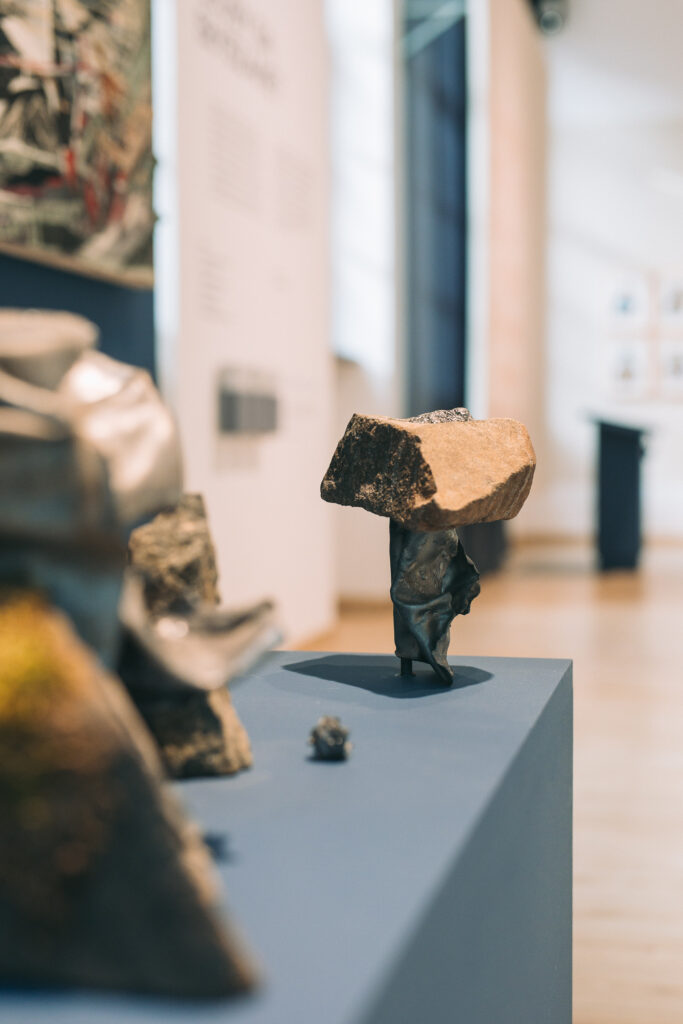
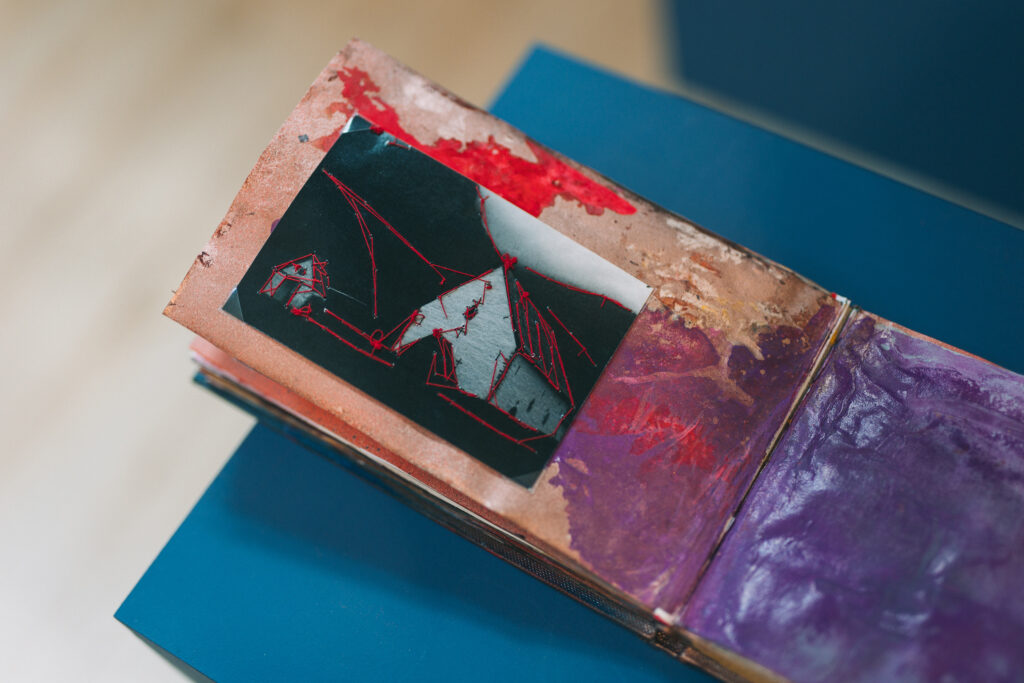
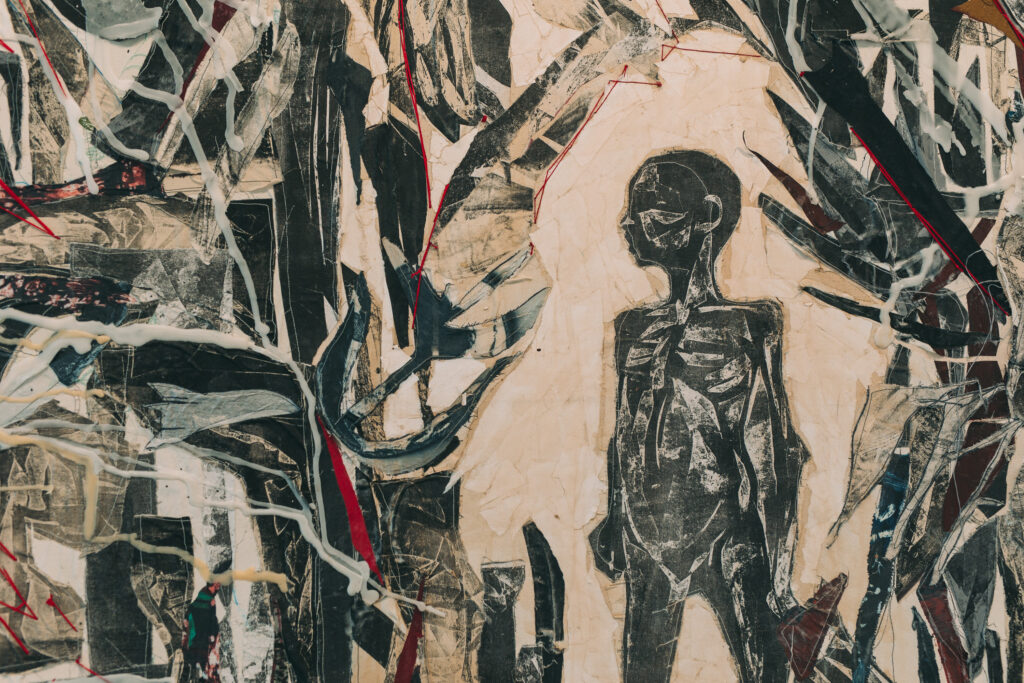
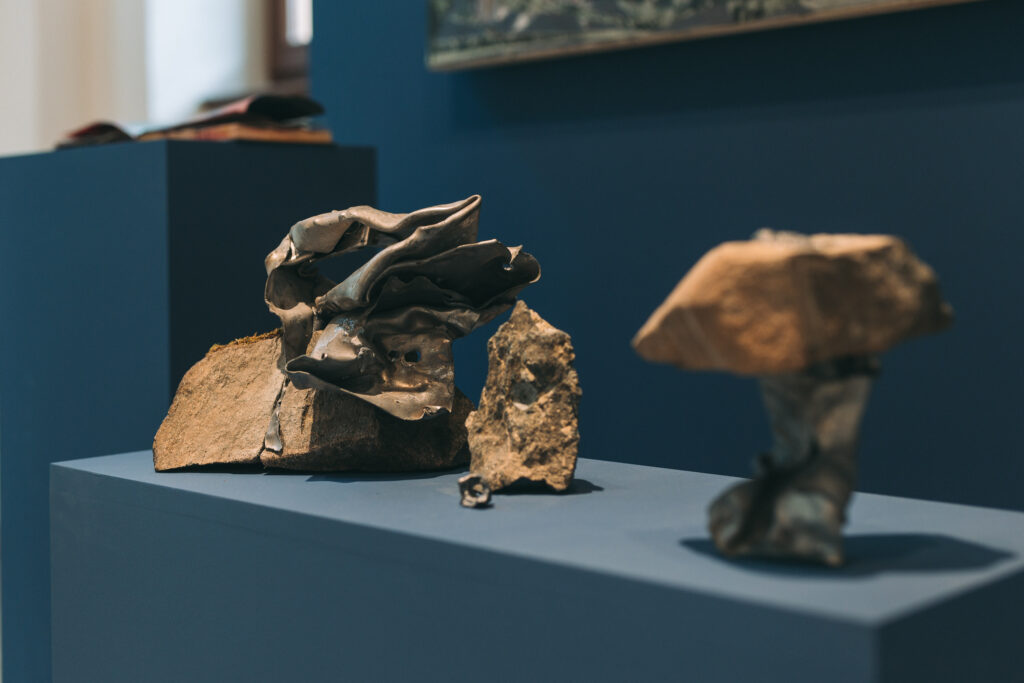
“Whose voices are heard? An exchange program for foreign artists from Poland and Norway” is a project co-financed by Iceland, Liechtenstein and Norway from the EEA Financial Mechanism 2014-2021 under the Culture program.

